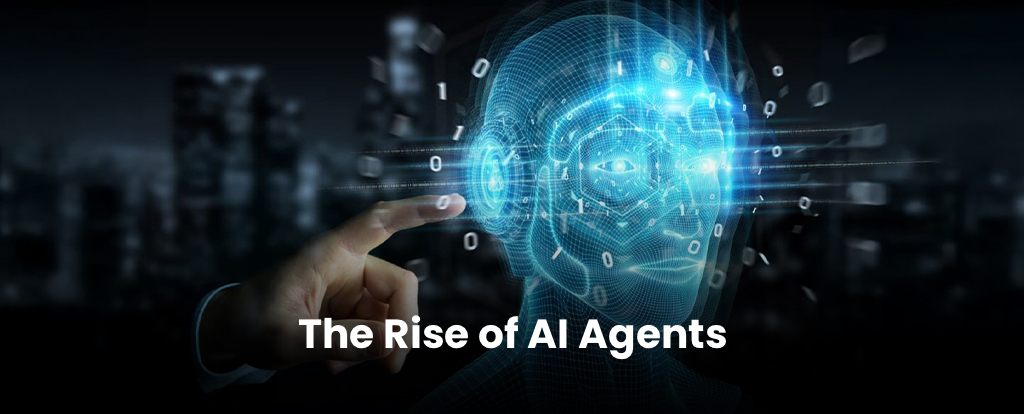Why AI Agents Matter
AI agents are transforming industries by automating complex tasks, enhancing decision-making,
and delivering personalized user experiences. These autonomous systems—powered by large language models (LLMs),
machine learning, and real-time data integration—act as “digital employees” that operate 24/7, reduce operational costs,
and scale effortlessly.
Key Benefits:
- Task Automation: Streamlines repetitive workflows like customer support, data entry, and fraud detection, freeing humans for strategic roles.
- Data-Driven Insights: Analyzes vast datasets to uncover trends and forecast outcomes, enabling smarter business decisions.
- Personalization: Tailors interactions using user behavior analysis, as seen in Netflix’s recommendation engines or Duolingo’s adaptive learning.
- Scalability: Handles surges in demand without added infrastructure, critical for industries like e-commerce and healthcare.
By 2030, experts predict 80% of routine tasks will be automated by AI agents, underscoring their growing indispensability.
How to Build an AI Agent
Building an effective AI agent involves strategic planning and leveraging modern tools. Below is a step-by-step framework:
1. Define the Agent’s Purpose
- Identify the Problem: Determine whether the agent will automate customer queries, analyze financial data, or manage IoT devices. Clear goals ensure focused development.
- User Interaction Design: Choose interfaces (chat, voice, APIs) and establish success metrics (e.g., response accuracy, user satisfaction).
2. Select Tools and Frameworks
- AI Models: Choose between general-purpose LLMs (e.g., GPT-4, Gemini) for language tasks or specialized models for domain-specific needs (e.g., fraud detection).
- Frameworks:
- Low-Code Platforms: Tools like Lyzr AI and Dify enable rapid prototyping with minimal coding.
- Open-Source Tools: LangChain (multi-step workflows) and AutoGen (multi-agent collaboration) offer flexibility.
- Enterprise Solutions: Microsoft Semantic Kernel integrates with existing systems for complex workflows.
3. Integrate Tools and Data
- Data Pipelines: Clean and structure data from APIs, databases, or sensors. Use synthetic data to supplement gaps.
- Tool Integration: Add functionalities like web browsing, function calling (e.g., calculations), and retrieval-augmented generation (RAG) for real-time data access.
4. Develop Logic and Test
- Algorithms: Implement reasoning (e.g., Chain of Thought prompting) and memory systems (short-term for context, long-term via vector databases).
- Testing: Simulate real-world scenarios to refine performance. For example, test a customer service agent’s ability to escalate unresolved queries.
5. Deploy and Monitor
- Ethical Governance: Ensure transparency, minimize bias, and comply with regulations like GDPR.
- Continuous Learning: Use feedback loops to improve accuracy. For instance, healthcare agents can learn from diagnostic outcomes.
Different Approaches to Building AI Agents
Low-Code/No-Code Platforms
- Use Case: Ideal for non-technical teams building chatbots or workflow automations.
- Tools: Lyzr AI (privacy-focused) and Dify (visual workflow builder).
Open-Source Frameworks
- For Developers: LangChain (modular workflows), AutoGen (multi-agent systems), and CrewAI (role-based collaboration).
- Specialized Use: Hugging Face Transformers Agents for NLP tasks or MetaGPT for simulating software teams.
Custom-Built Solutions
- Hybrid LLMs: Combine general models (e.g., GPT-4) with fine-tuned, domain-specific models for specialized tasks like legal document analysis.
- Human-in-the-Loop: Integrate human oversight for high-stakes decisions (e.g., banking or healthcare).
Enterprise-Grade Systems
- Integration: Use Microsoft Semantic Kernel for seamless CRM or database connectivity.
- Security: Focus on frameworks with encryption and access controls, especially in regulated industries.
Future Trends
- Multimodal Interaction: Agents combining text, voice, and visual inputs for richer user experiences.
- Ethical AI: Increased focus on explainability and bias mitigation.
- IoT Integration: Smart homes and autonomous vehicles leveraging AI agents for real-time decision-making.
Check Out the Video:
By adopting these strategies, businesses can harness AI agents to drive innovation, efficiency, and competitive advantage.
Start small with frameworks like LangChain or low-code platforms and scale strategically for long-term success.

